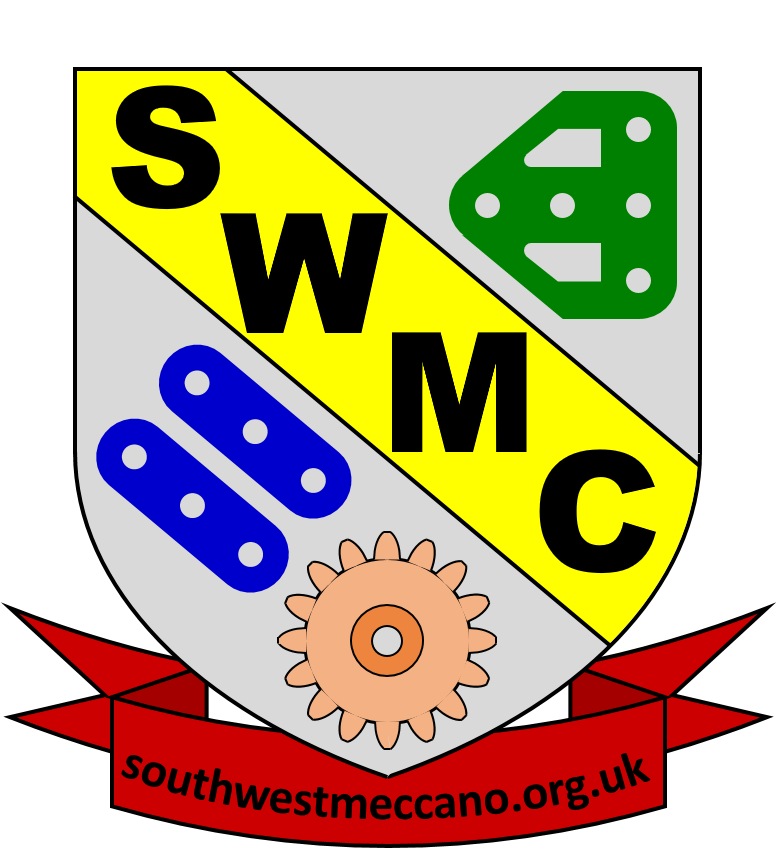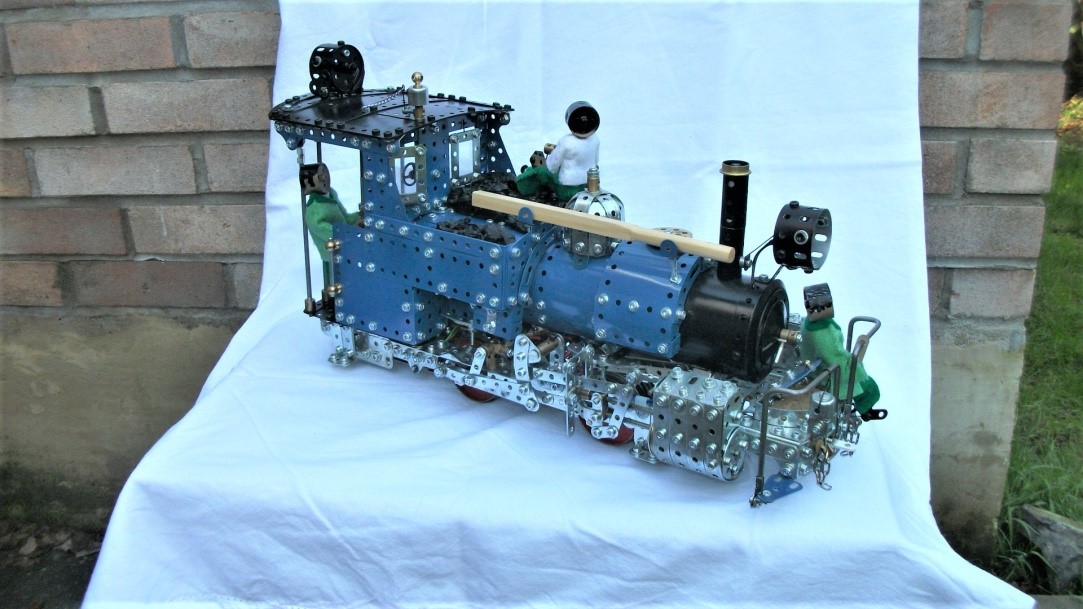The Darjeeling Himalayan Railway (DHR) - Designed and built by Neil Bedford
At recent SWMC gatherings we had seen some excellent locomotives but I had never tried one myself. In recent years I have tried to focus on smaller models, with plenty of detail and when suitable, to include Meccano figures too. Armed with just a layman’s knowledge of locomotives I simply scanned the Internet until I had a list of a few which looked interesting. Clearly in the lead was a distinctive 0-4-0 narrow gauge version, with a saddle tank, large spot-lamps and a strange front-mounted tender, made by Sharp Stewart in Manchester and Glasgow at the end of the 19th Century and then exported to India where they still run today on the Darjeeling Himalayan Railway (DHR) – definitely quirky.
This little railway operates in the Himalaya Mountains in the beautiful state of West Bengal, climbing through the lush, green hills to transport passengers, light freight and famously, tea. The routes climb through the wooded hills using multiple sets of points to criss-cross the terrain.
The loco sports a crew of up to five, with one or two sitting on the front, taking handfuls of sand from a chest and sprinkling it onto the rails when extra grip is required. Another has the tough job of sitting in the coal tender and breaking up large lumps of rough coal with a hammer, before feeding it down chutes into the cab. On the footplate is the driver who also tends the fire and when needed, a dedicated fireman. In the towns the rails are embedded into the street meaning that avoiding cars can become a hazard, but out of town, the crew must watch out for elephants, snakes and even tigers as they slowly crawl along.
The track itself is often in a poor state, with too few sleepers and a gauge which is far from consistent, leading to occasional derailing. The answer is for each loco to carry a hefty wooden ‘re-railing pole’ which can be used to lever the derailed loco manually back onto the track (another reason for the large and willing crew – no “Leaves on the line” excuses for these chaps).
Only once before (as a lad), have I seen a Meccano loco running along Meccano track which included a set of points and I figured that doing something similar would add some interest - but I underestimated the work involved. My model uses a ‘two-rail’ system to pick up electricity from the rails, meaning that the wheels and motions on one side of the loco must be insulated from those on the other side. Whilst tricky, this part is not too hard to achieve provided you take your time.
I have metal ‘wipers’ pressing against all four wheels to conduct the electricity to the drive motor and to the various lights etc. Picking up power from all the wheels, rather than just one on each side, helps maintain a steady supply when crossing the points which have a ’dead-spot’ in the centre, made from Meccano electrical insulated parts.
My track includes six straight sections (each around 1 ft long) and a set of points and there is no reason why I could not add more. The rails are all Meccano but the sleepers are wood (needed to achieve electrical isolation) and the sections fit together a little like a Hornby trainset.
For several reasons, getting the points to work reliably has taken a great deal of time (and very kind assistance from fellow enthusiasts) but the challenge was worth the effort as I now have something rarely seen in Meccano. If you fancy trying it then you must – I can now imagine slightly different ways of doing it – but just be ready for a lot of trial and error.
The electrical circuit is fairly simple. The loco automatically stops, pauses and reverses at the end of each run, the front and rear spotlights illuminate depending on the direction of travel and I have also added a red lamp glowing in the firebox and a small hanging lantern at either end of the chassis.
The DHR line uses a distinctive blue livery and I decided to recycle some old parts to replicate this by stripping the existing paint and then respraying with car aerosols (primer and top coat). In contrast, the chassis and motions are built using bright zinc-plated parts. The overall effect is pleasing, with a loco which looks like the real thing and which runs very smoothly.
Finally are the crew. Three little chaps who are made entirely from Meccano, other than a short strip of masking tape to join the two pulleys forming their heads and some felt from which I have made their uniforms. The man at the front idly waves his foot as the loco plods along, the fellow in the tender looks from side to side whilst smashing large blocks of coal with a hammer and the driver pushes across a steam regulator at the end of each run. These figures add some life to the model as well as a sense of scale and hopefully, a little bit of fun.
Building anything other than a motor vehicle is unusual for me but to my great satisfaction, this little locomotive has turned out as one of my better models.
(for more pictures of this model as it came together, please visit my website at https://neilsmeccanoandstuff.jimdo.com/)














